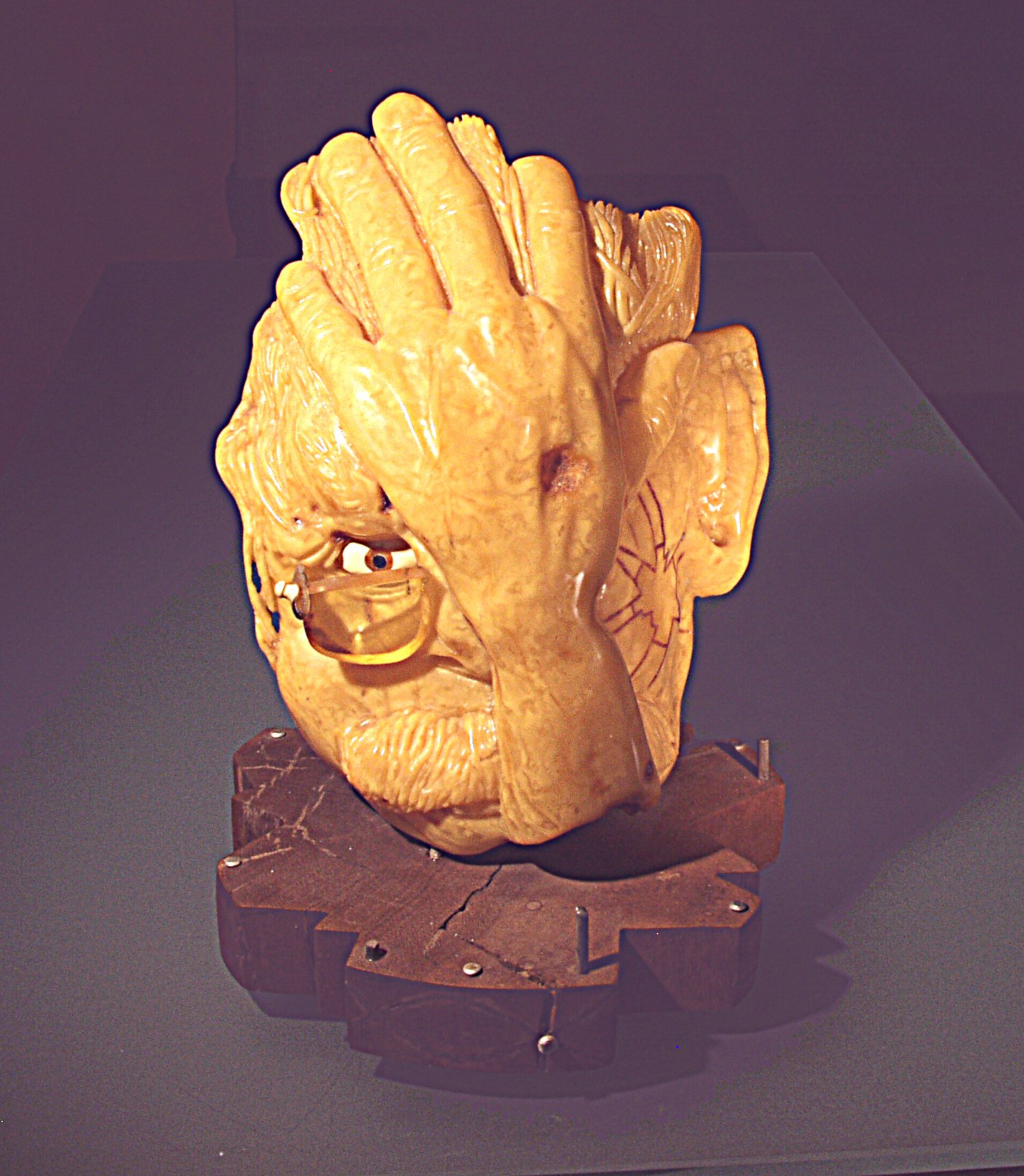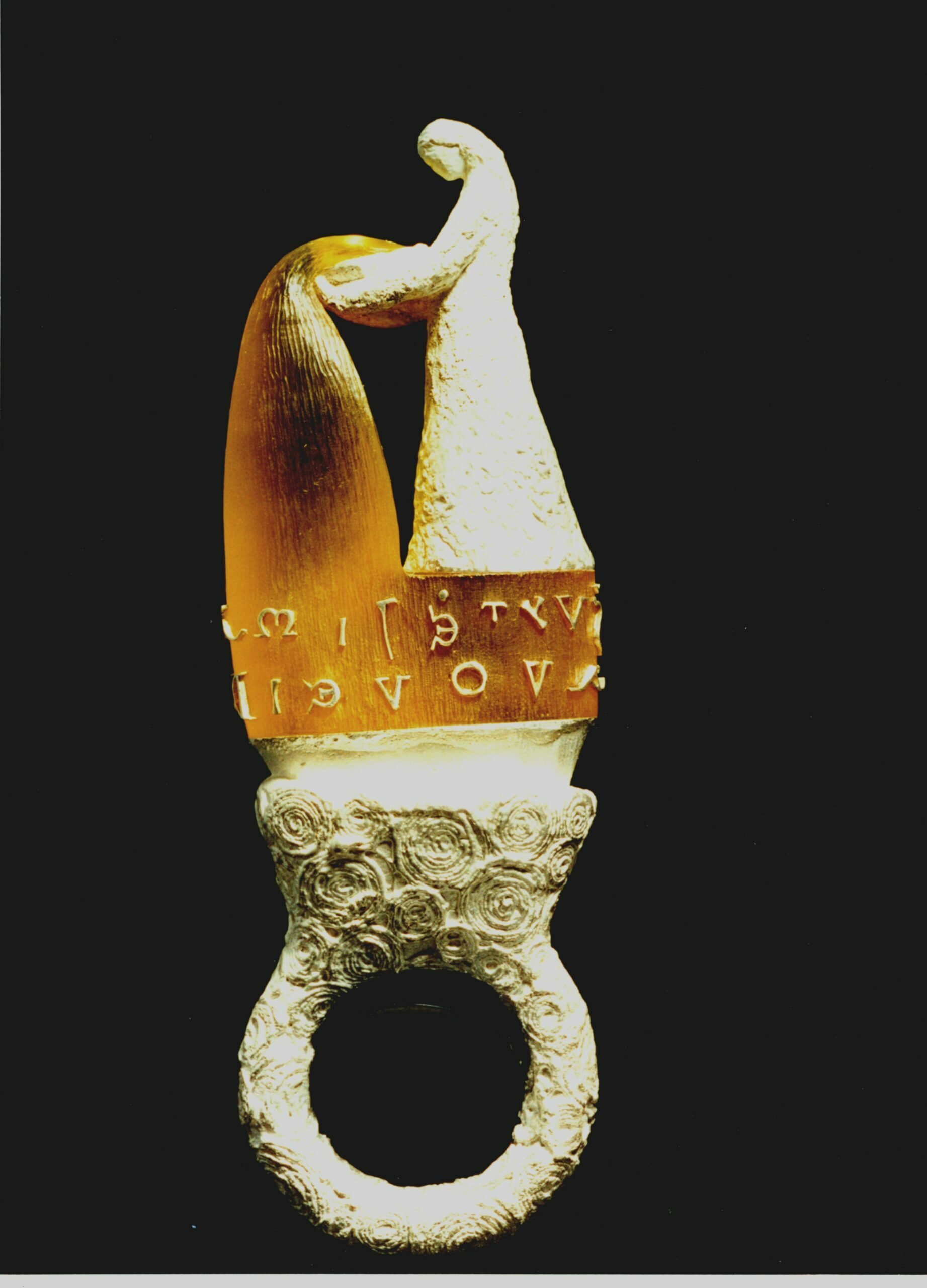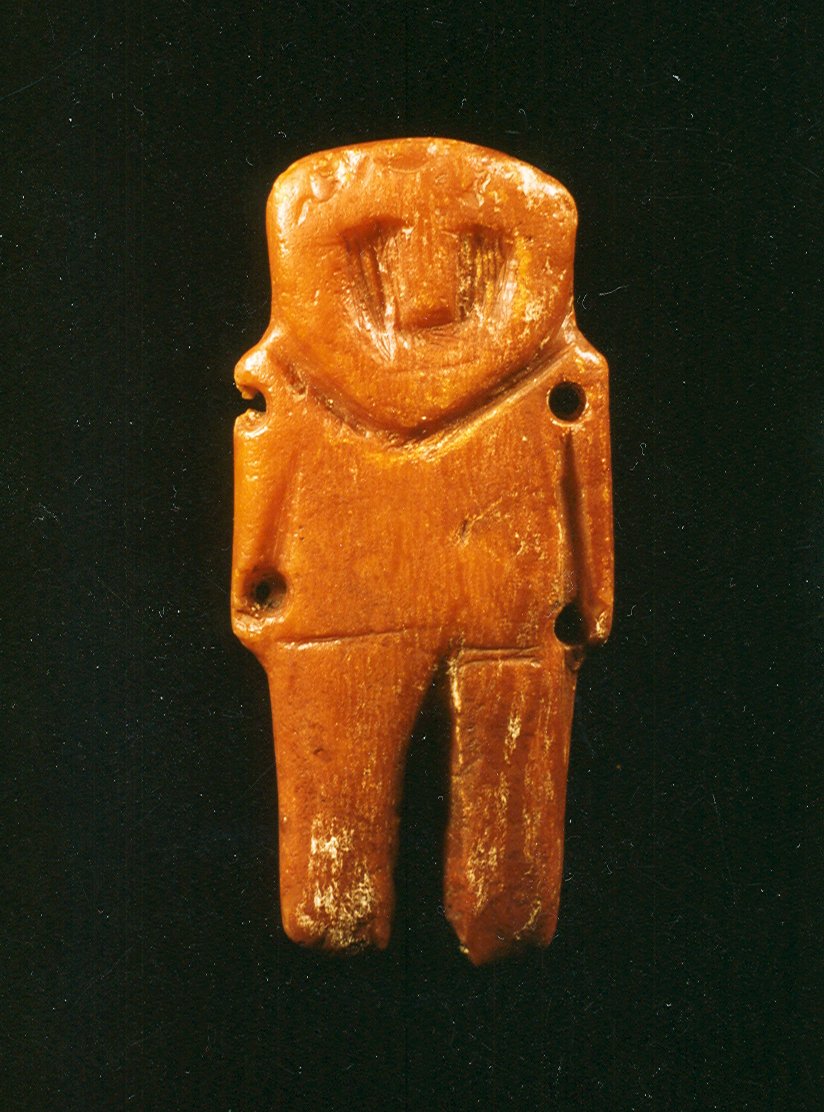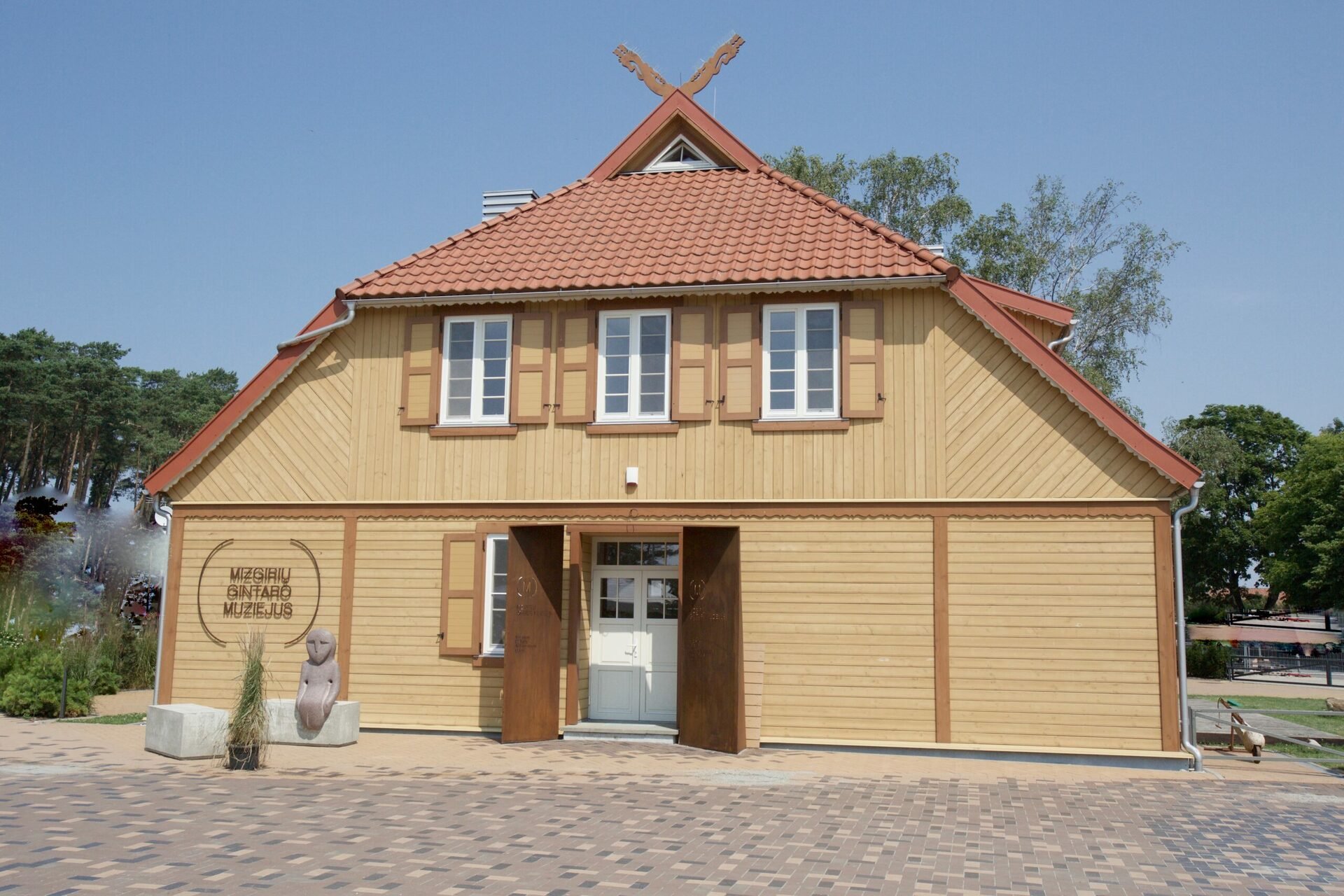Lithuania is proud of the Curonian Spit – a truly special creation of the nature and man – the sand dune peninsula, separating the Curonian Lagoon from the Baltic Sea, where people had settled already in pre-historic times. The Curonian Spit is about 98 km long and its width is 0.4-4 km. 52 km belongs to Lithuania and 46 km is administered by the Russian Federation.
At the end of 2000, the World Heritage Committee included the Curonian Spit into UNESCO World Heritage List as a ‘cultural landscape of exceptional universal worth, illustrating the history of the dramatic coexistence of the nature and man’.
Woman and man in the dunes
A life of multifaceted coexistence, enriched with creative exploration, is shared by the artists Virginija Mizgiriene and Kazimieras Mizgiris, as if coming from Kobo Abe’s novel Woman (and Man) in Dunes and being an inseparable part of the historical heritage.
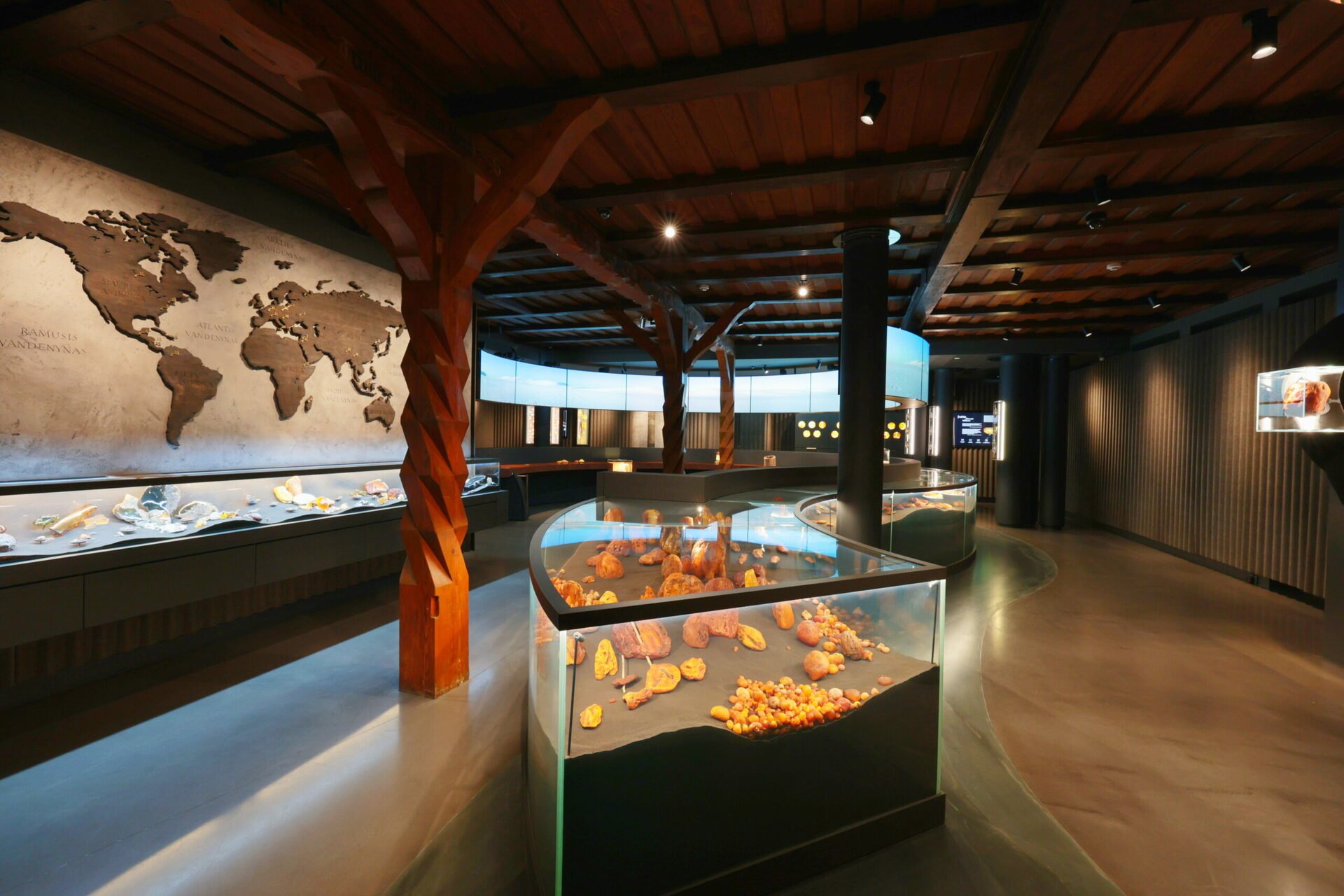 Having tamed the winds, sand and amber, together with the all-powerful nature, the past and the present, they create a unique world, which, upon getting to know it, would be interesting for the people of the future, when their creators and their contemporaries will have left for the other spaces.
Having tamed the winds, sand and amber, together with the all-powerful nature, the past and the present, they create a unique world, which, upon getting to know it, would be interesting for the people of the future, when their creators and their contemporaries will have left for the other spaces.
Capturing the unrepeatable moments of sand and emptiness in his photographs, Kazimieras, together with Virginija, who has gathered a colony of amber artists and curates exhibitions, have been traveling on the Amber Road from the Baltic to the Etruscans, for more than thirty years. The Amber Road, like the Silk Road, has connected many countries of the world, reaching the homes of many nations, bringing beauty, light, goodness, health and joy.
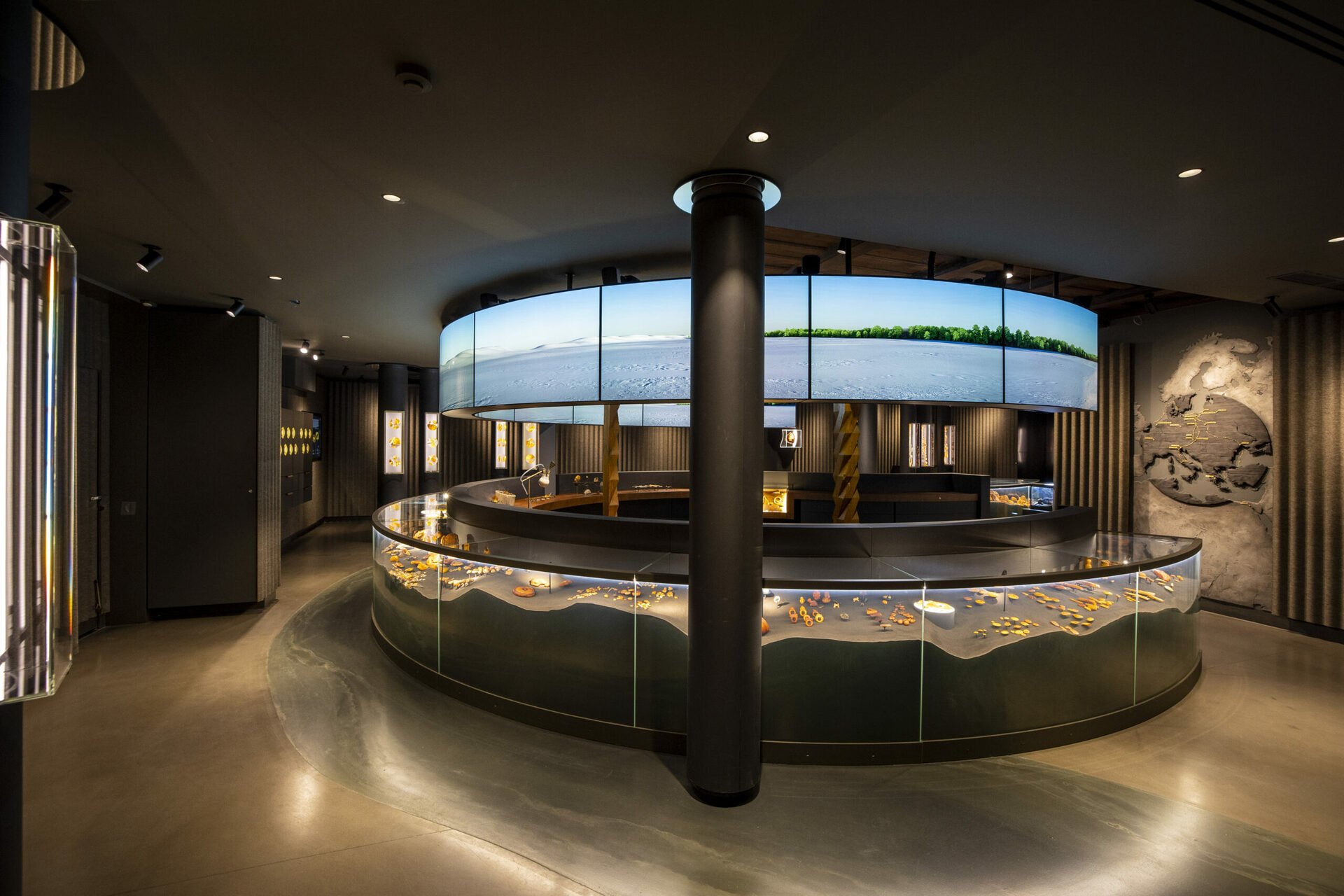 The couple has established amber galleries in Nida and Vilnius, also the Artist Home, the Baltic Amber Art Centre, and the movable exhibition Baltic Amber: History and Design, which has visited a number of cities and countries of the world: Iceland, Canada, Belgium (introduced at the European Parliament under the cultural project of Central and Eastern European countries), the USA (Washington and Chicago), also at the Festival of Contemporary Art, organized by the European Cultural Foundation at the Vittoriano Museum in Rome, taking part at the World Amber Council – this is only a part of the cultural activity, the purpose of which is to carry the message of amber as the wonderful gift to humanity to the world.
The couple has established amber galleries in Nida and Vilnius, also the Artist Home, the Baltic Amber Art Centre, and the movable exhibition Baltic Amber: History and Design, which has visited a number of cities and countries of the world: Iceland, Canada, Belgium (introduced at the European Parliament under the cultural project of Central and Eastern European countries), the USA (Washington and Chicago), also at the Festival of Contemporary Art, organized by the European Cultural Foundation at the Vittoriano Museum in Rome, taking part at the World Amber Council – this is only a part of the cultural activity, the purpose of which is to carry the message of amber as the wonderful gift to humanity to the world.
And now this message is conveyed through the new, modern Mizgiris Amber Museum, equipped with latest technology. Mizgiris Amber Museum in Nida, established in the old-fashioned youth hostel, built in 1931, opened its door for the residents and guests of Neringa – this year’s Lithuanian Capital of Culture – in July.

Forest and river
Professional museum designers from the USA took some time and offered many ideas for the new Mizgiris Amber Museum.
Virginija and Kazimieras took the road of the time-tested values: conveying information through emotions and sensations. Thus the main concept of the museum was born, featuring a forest of amber trees and a river. The flowing river refers to the museum’s activity and the path of amber from the nature to culture.
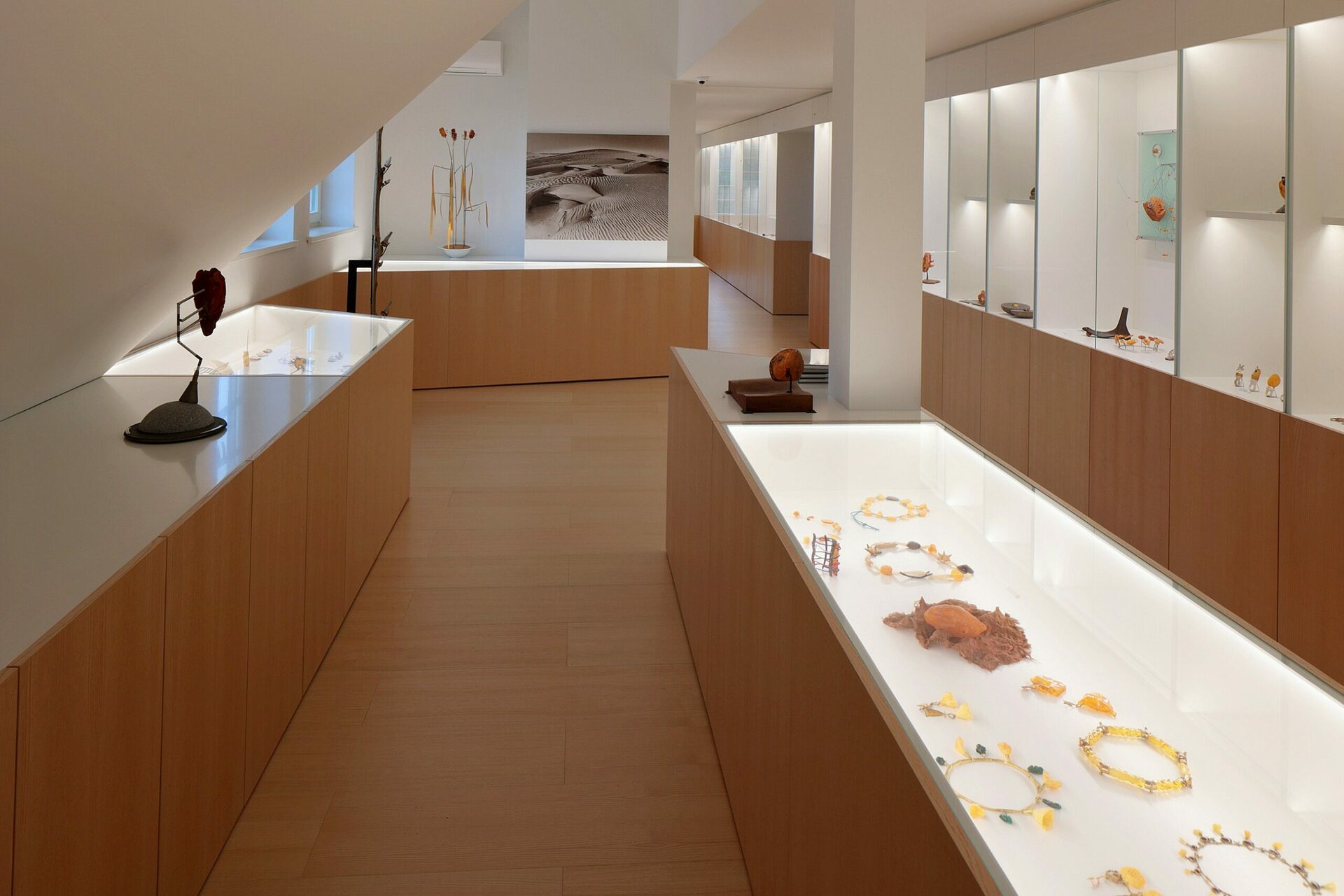 Visitors are guided along that river by lights and a voice. They walk through the mysterious forest of amber trees, listening to the story of the secrets of amber, told to them from the sandy dunes on a screen by a person, who has dedicated his life to that.
Visitors are guided along that river by lights and a voice. They walk through the mysterious forest of amber trees, listening to the story of the secrets of amber, told to them from the sandy dunes on a screen by a person, who has dedicated his life to that.
‘The museum presents amber in artistic forms, while scientific information is provided using interactive means.’ says Virginija Mizgirienė. ‘The collection of rare pieces of amber and art is supplemented with a virtual story of the formation of amber on the screen. The special screens show a 3D video on the formation of amber and the forest of amber trees that used to grow 40-50 million years ago. The legend is also enriched with an animation of Jūratė and Kastytis. The internal multimedia bridge features a poetic tale of the development of the Curonian Spit, based on real facts.’
 The exhibition includes an integrated activity space, where visitors can find out about the major physical and curative qualities of amber through various means of artistic expression. The touchscreens feature an amber encyclopaedia. The amber at the museum came from various parts of the world.
The exhibition includes an integrated activity space, where visitors can find out about the major physical and curative qualities of amber through various means of artistic expression. The touchscreens feature an amber encyclopaedia. The amber at the museum came from various parts of the world.
The amber gallery on the second floor features amber art, produced by professional Lithuanian and foreign artists.
The concept of the amber chamber features the yet un-found or hidden amber chamber, the treasures of which can be seen only by approaching the exhibits. The secrets of the amber chamber are revealed as you come closer. The amber chamber features various pieces, produced by the best artists of the field.

Amber at EXPO
The Lithuanian section at EXPO 2020 features a small showcase, representing Mizgiris Amber Museum. It introduces the formation of amber – morphology, colours, and exhibits from Juodkrantė amber treasure.
Meanwhile, the new Mizgiris Amber Museum is open to anyone, interested in the history of amber and excited to see the results of the coexistence and creations of the nature and man in an authentic environment.
More information:
https://www.facebook.com/MizgiriuGintaroMuziejus
+37061004280
Author of the article Zita Tallat-Kelpšaitė


